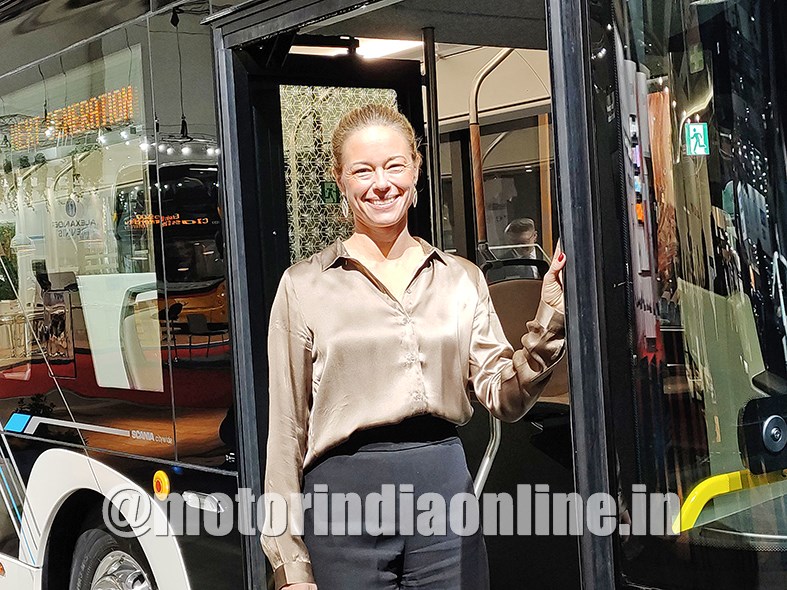Debuts an updated 12 metre battery electric variant in the range of city and suburban buses along with Scania ‘flexible maintenance’ for new-generation buses
Swedish bus manufacturer Scania presented its latest ‘Citywide’ range of buses meant for various urban operations at Busworld. Leading with Citywide BEV, the range also includes an electric-hybrid city bus, along with Euro VI-compliant conventional diesel and gas variants. “Our guiding light has been to design a bus for more space, light and cleanliness. To reverse global warming, it is crucial that buses offer all the comforts needed to convince more people to switch to public transport. The new Citywide offers lower fuel and energy consumption, higher passenger capacity, better drivability, and improved passenger and driver comfort,” said Anna Carmo e Silva, Head of Buses and Coaches at Scania.

The Scania Citywide BEV is indeed an epiphanic iteration. Equipped with a powerful 300 kW electric motor, the electric bus features an oil spray cooling system for the motor, which means there are no torque limitations in hilly and warm environments. It also eliminates the need for air-conditioning and compromises with both systems fully operational in parallel. Four batteries on the roof and four more in the rear overhang gives a lower centre of gravity to the bus, assuring better driveability and handling. This distribution of weight enables the bus to carry up to 95 passengers.
The display product had an option for opportunity fast charging through the roof-mounted inverted pantograph. In addition to 300 kW DC pantograph charging, the bus is equipped both for alternating and direct current depot charging. With fewer batteries, the e-bus is equal in weight to diesel or gas bus with a similar passenger capacity, according to Scania. “With a range of 80-150 km, the Citywide electric is well-suited for the vast majority of inner city routes. Naturally, each transport system must be optimised based on its own set of conditions. However, our analyses clearly show that charging throughout the day in most cases provides the best total operating economy,” said Silva.
Scania claims that all key components such as batteries and powertrain are designed and engineered in-house, thereby vouching for complete vehicle optimisation. It can therefore take complete vehicle responsibility with services and expertise in its global network, which ensures maximum availability. The hybrid-electric 12 metre chassis, on the other hand, boasts side-mounted engine placement using 7 or 9 litre engine options, which gives flexibility to increase passenger capacity to a maximum of 100, depending on the propulsion and layout options. Fuel-saving has been a prime area of focus behind these new buses, with consumption lowered by 3-5% in the 7 litre engine.
With the introduction of a start and stop function, the total reduction in diesel and biodiesel operation will be 8% while the figure for gas buses will be up to 15%. Scania’s ‘Opticruise’ is also available on suburban low entry buses. Fuel efficiency is also positively affected by the improved air drag, cruise control with active prediction (CCAP), electrical cooling fan, SCR-only after-treatment, and reduced weight. Leveraging the success of Scania’s ‘flexible maintenance’ in trucks, the bus maker is extending the same service for its buses. Each bus is used differently and provides unique real-time data. Using operational factors such as fuel consumption, mileage and speed, Scania can establish an optimal maintenance plan for increases in uptime and maximum operational revenue.